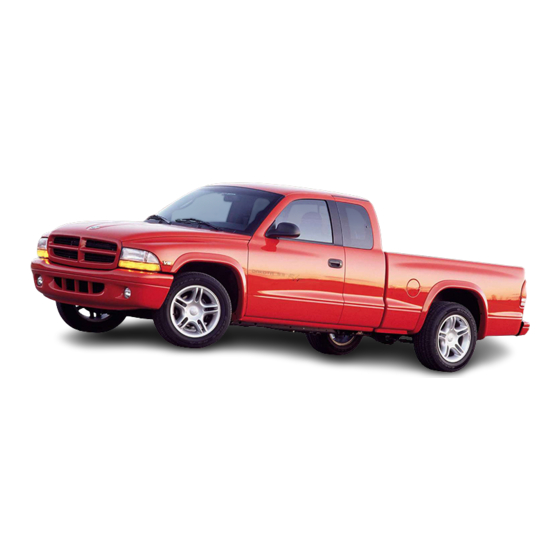
Table of Contents
Advertisement
Quick Links
GROUP TAB LOCATOR
Introduction
0
Lubrication & Maintenance
2
Suspension
3
Differential & Driveline
5
Brakes
6
Clutch
7
Cooling
8A
Audio
8B
Chime/Buzzer
8E
Electronic Control Modules
8F
Engine Systems
8G
Heated Systems
8H
Horn
8I
Ignition Control
8J
Instrument Cluster
8L
Lamps
8M
Message Systems
8N
Power Systems
8O
Restraints
8P
Speed Control
8Q
Vehicle Theft Security
8R
Wipers/Washers
8W
Wiring
9
Engine
11
Exhaust System
13
Frame & Bumpers
14
Fuel System
19
Steering
21
Transmission and Transfer Case
22
Tires/Wheels
23
Body
24
Heating & Air Conditioning
25
Emissions Control
30
New Vehicle Preparation
Component and System Index
Service Manual Comment Forms
(Rear of Manual)
Advertisement
Chapters
Table of Contents

















Need help?
Do you have a question about the Dakota Sport 2001 and is the answer not in the manual?
Questions and answers